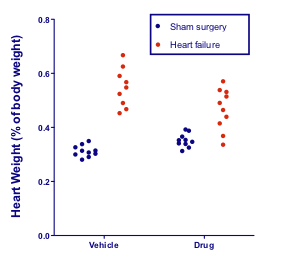Asymmetrical limits for the zone of equivalence (Chapter 21)
Tomasz Kowalczyk from Copernicus Therapeutics, Inc. kindly pointed out:
"Page 151, third paragraph. The argument given in this paragraph still does not explain why the zone of equivalence is not symmetrical around 100%. It is true that the zones of equivalence are the same for the test/reference ratio and for the reference/test ratio (with inverted limits), but this fact (although convenient) does not explain why each of these two zones is asymmetrical. The zone is asymmetrical, because it is supposed to contain an asymmetrical confidence interval. The 90% CI is asymmetrical, because this is the CI of the geometric mean ratio (or ratio of geometric means) of peak drug concentrations (Cmax). (On page 95 you state: “Note that the CI of the geometric mean is not symmetrical around the geometric mean”.) The mean is geometric, rather than arithmetic, because the pharmacokinetic measures AUC and Cmax are statistically analyzed after log transformation, as recommended by the FDA. The primary outcome of the analysis is thus the 90% CI for the difference in the arithmetic means of the log transformed data, which is then back-converted to the 90% CI for the ratio of the geometric means. The 90% CI for the difference in the means of log transformed data is perfectly symmetrical (around the mean difference), so is the zone of equivalence if expressed as logarithms: log100+/- log1.25, if the logarithms to the base 10 are used and the ratio is expressed as percentage. The zone of equivalence for the ratio is also perfectly symmetrical but in the multiplicative (not only practical) sense: 100*1.25=125 for the upper limit, and 100/1.25=80 for the lower limit.
For this reason, Figures 21.2 & 21.3 are incorrect. Since the 80-125% zone of equivalence applies to geometric means (see the previous comment), the CIs should be asymmetrical around the means. The figures, as printed, show symmetrical confidence intervals."
 Thursday, July 1, 2010 at 12:32PM
Thursday, July 1, 2010 at 12:32PM  8 Comments
8 Comments 

